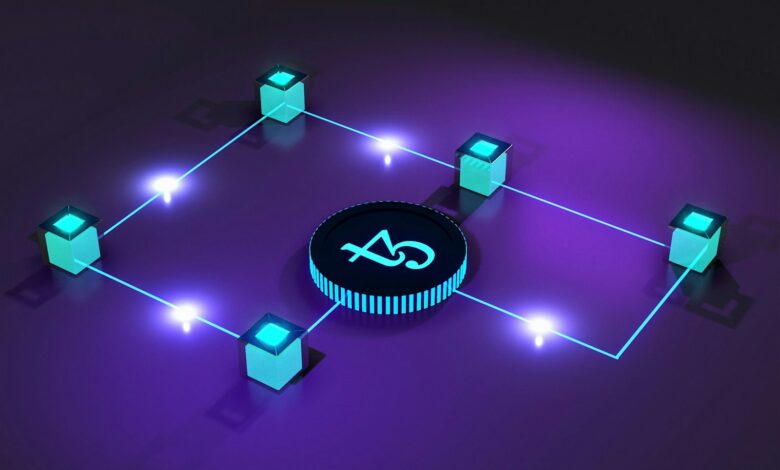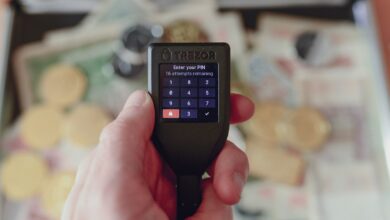Digital accounting – blockchain transaction recording

Integrating automated frameworks for ledger entries enhances transparency and accuracy in financial dealings. Distributed ledger technologies ensure immutable logs of every exchange, reducing the risk of errors and unauthorized alterations. Such systems facilitate real-time synchronization across multiple parties, enabling seamless validation processes.
By leveraging cryptographic consensus mechanisms, these platforms provide a verifiable audit trail that meets rigorous compliance standards. This level of traceability supports comprehensive reviews without manual intervention, accelerating fiscal oversight while minimizing operational costs.
The adoption of these innovative solutions transforms traditional bookkeeping by embedding security and openness directly into the data architecture. Organizations can thus achieve consistent and tamper-proof record maintenance, which strengthens stakeholder confidence and streamlines regulatory reporting requirements.
Digital accounting: blockchain transaction recording [Digital Finance digital-finance]
Implementing automated ledger systems enables organizations to enhance transparency and accuracy in their financial documentation. Leveraging distributed ledger technology ensures that every exchange entry is cryptographically secured and immutable, which significantly reduces the risk of data tampering during audits. This approach supports real-time monitoring and verification, allowing auditors to trace historical records with unparalleled clarity.
Financial institutions adopting decentralized registries benefit from streamlined validation processes, as consensus mechanisms eliminate discrepancies typically found in centralized databases. The integration of smart contracts automates compliance checks and reconciliations, minimizing manual interventions while maintaining consistent audit trails. Such frameworks facilitate regulatory adherence by providing an indisputable chronology of fiscal events.
Technical advantages of immutable ledgers in bookkeeping
The application of append-only data structures enhances trustworthiness by preventing retroactive modifications to recorded entries. For example, Hyperledger Fabric’s permissioned network architecture allows selective visibility for stakeholders without compromising confidentiality. This feature proves critical when handling sensitive financial information across multinational entities.
Moreover, timestamping protocols embedded within distributed chains guarantee chronological integrity, which is essential for forensic accounting investigations. Industries such as supply chain finance have reported reductions in settlement times by up to 40% after incorporating these technologies into their recording frameworks. These improvements underscore the impact on operational efficiency and cost control.
- Audit readiness: Immutable logs reduce preparation time by offering verifiable proof of past activities.
- Error minimization: Automated validation decreases human errors inherent in traditional bookkeeping.
- Data consistency: Synchronization across nodes ensures uniformity of financial statements.
The challenge remains balancing openness with privacy requirements, especially under stringent data protection laws like GDPR. Permissioned networks address this by restricting access to authorized parties only, while still maintaining a transparent framework for oversight authorities.
A forward-looking strategy involves integrating artificial intelligence tools with decentralized registries to analyze patterns in transactional data automatically. Predictive analytics can flag anomalies before they escalate into compliance issues or fraud attempts, elevating the role of continuous auditing beyond periodic reviews.
This evolution signifies a paradigm shift from reactive verification towards proactive governance models that are adaptive to evolving regulatory environments and market demands. Institutional adoption will likely accelerate as demonstrable ROI emerges from reduced administrative overheads and improved stakeholder confidence in financial disclosures.
Setting up blockchain accounts
Initiate the configuration of distributed ledger profiles by generating unique cryptographic keys that serve as identifiers and security credentials. These key pairs enable users to interact with the decentralized database, ensuring that each entry is securely linked to its originator. Proper management of private keys is fundamental to maintaining control over assets and authorizations within this environment.
Profiles in decentralized ledgers must be registered through compatible nodes or client software that supports the specific protocol. This setup process includes defining permissions, associating metadata, and configuring automated rules for handling asset exchanges. Ensuring compatibility with network consensus mechanisms guarantees seamless integration and validation of future operations.
Technical considerations in account initialization
The establishment of a new user profile involves multiple layers of data integrity checks and encryption standards. Public identifiers are recorded on immutable ledgers visible to all participants, promoting transparency while preserving confidentiality via hashing techniques. Automated scripts can facilitate recurring value exchanges by embedding smart contracts directly into these profiles, minimizing manual intervention.
- Key pair generation: Utilization of elliptic curve cryptography (ECC) algorithms ensures robust security for identity verification.
- Node synchronization: Profiles must synchronize with the global ledger state to reflect accurate balances and permissions.
- Smart contract linkage: Embedding programmable conditions allows for automated execution of predefined instructions upon meeting specified criteria.
A practical example is seen in permissioned distributed ledgers used by financial institutions, where profile creation includes multi-signature configurations to enhance control over asset movements. This approach reduces risks associated with unauthorized access while maintaining auditability across interconnected systems.
The integration of these components enhances operational efficiency by enabling real-time updates visible across all authorized parties. This transparency facilitates regulatory compliance audits and internal reconciliations without necessitating centralized intermediaries. Moreover, it allows organizations to implement sophisticated risk management frameworks tied directly to immutable records.
An evolving application involves tokenized assets where account structures support fractional ownership models managed through programmable ledgers. These setups allow seamless transferability and instant settlement processes governed by embedded code, reflecting shifts in market demand and liquidity preferences with minimal latency.
Verifying Transaction Authenticity
Ensuring the legitimacy of entries within a decentralized ledger demands rigorous validation mechanisms. Each operation undergoes cryptographic verification, where consensus protocols confirm that the data aligns with predefined rules before inclusion. This process eliminates unauthorized modifications and guarantees that every change is traceable through immutable hashes, preserving the integrity of the comprehensive registry.
Automated validation systems play a pivotal role in streamlining authenticity checks by continuously cross-referencing new records against historical data stored across distributed nodes. These mechanisms reduce human error and enhance efficiency during audits, enabling real-time monitoring without compromising transparency. Such automation supports compliance requirements by maintaining consistent and verifiable documentation of all recorded activities.
Technical Foundations and Practical Implications
The use of consensus algorithms like Proof of Work (PoW) or Proof of Stake (PoS) ensures that additions to the shared database are approved only after extensive computational effort or stake validation, respectively. For example, Ethereum’s transition to PoS has improved transaction finality speed while preserving security standards crucial for trustworthy bookkeeping. Additionally, timestamping each entry solidifies chronological order, which is indispensable for forensic auditing and dispute resolution.
Case studies from financial institutions demonstrate how integrating automated ledgers can revolutionize traditional bookkeeping practices. In one instance, a multinational bank reduced reconciliation times by over 60% by implementing a permissioned ledger system with embedded audit trails accessible to authorized parties. This approach not only enhanced operational transparency but also reinforced regulatory adherence through immutable proof of asset flows documented in real time.
Integrating blockchain with ERP
Incorporating distributed ledger technology into enterprise resource planning systems enhances the integrity and transparency of financial operations by enabling immutable data entries. This integration facilitates real-time synchronization of operational records across departments, ensuring that every monetary exchange is securely logged and verifiable within a shared database. Automated validation mechanisms reduce manual errors and accelerate reconciliation processes, thereby optimizing internal controls.
Embedding decentralized ledgers into ERP frameworks supports continuous audit readiness through persistent data availability and traceability. Each recorded event forms an append-only log, resistant to retroactive modifications, which simplifies compliance with regulatory standards and internal governance requirements. Organizations benefit from streamlined verification workflows as auditors can access trustworthy historical data without extensive intermediary steps.
Technical considerations and practical implementations
When linking distributed ledger solutions with ERP platforms, attention must be paid to consensus protocols and scalability constraints to maintain system performance under transactional loads. Permissioned networks often serve as a pragmatic choice for enterprises seeking controlled access combined with high throughput. For example, integrating Hyperledger Fabric with SAP S/4HANA has demonstrated measurable improvements in procurement cycle transparency while safeguarding sensitive business information.
Automated smart contract modules embedded within these hybrid systems enable conditional execution of financial activities based on predefined criteria, reducing latency in approval cycles. In supply chain finance scenarios, such automation guarantees prompt settlement once contractual obligations are met, minimizing counterparty risks. Case studies involving IBM’s Food Trust platform reveal enhanced inventory visibility coupled with rapid dispute resolution powered by such programmable logic.
The fusion of immutable ledgers and traditional ERP also empowers predictive analytics by providing reliable datasets untouched by retrospective tampering. Financial forecasting models leverage this accuracy to deliver sharper insights into cash flow trends and operational bottlenecks. Enterprises employing these integrated architectures report improved decision-making capabilities driven by transparent historical records tracked automatically through cryptographic proofs.
Regulatory environments increasingly favor transparency offered by these converged solutions. Adopting hybrid architectures aligns organizations with emerging reporting standards requiring demonstrable audit trails for fiscal operations. Consequently, firms can anticipate reduced compliance costs while strengthening stakeholder confidence via provable data authenticity embedded in their enterprise management systems.
Automating audit trails
Implementing automated systems for maintaining comprehensive logs of financial exchanges significantly enhances the integrity and reliability of fiscal oversight. Leveraging distributed ledger technology allows for seamless, tamper-evident documentation of each monetary event, eliminating manual errors and accelerating compliance verification processes. This approach ensures every entry is chronologically immutable, promoting a transparent ecosystem where audits can be executed with minimal latency.
Utilizing cryptographically secured registers facilitates continuous monitoring without interrupting operational workflows. By embedding smart protocols that autonomously validate and timestamp each record, organizations reduce dependence on traditional reconciliation methods prone to human oversight. Such innovations bolster confidence in the fidelity of data repositories while enabling real-time anomaly detection through algorithmic scrutiny.
Technical advantages and practical applications
The integration of decentralized registries into bookkeeping frameworks introduces several technical benefits:
- Enhanced traceability: Each financial event is permanently etched into the chain, ensuring an auditable sequence resistant to retroactive manipulation.
- Operational efficiency: Automation minimizes labor-intensive data entry and cross-verification tasks, reducing overhead costs and error rates.
- Regulatory alignment: Immutable ledgers simplify adherence to stringent reporting mandates by providing verifiable evidence accessible for inspection at any time.
A case study involving a multinational corporation demonstrated that integrating these automated registers reduced audit preparation time by 40%, while simultaneously increasing detection capabilities for discrepancies by leveraging machine learning models trained on historic ledger data patterns.
The deployment of such systems also supports advanced analytical tools capable of interpreting vast datasets within digital accounting environments. Predictive models can flag irregularities promptly, facilitating preemptive actions against potential fraud or compliance breaches. As regulatory bodies worldwide intensify scrutiny over financial transparency, companies adopting these technologies position themselves advantageously in maintaining market trust and operational resilience.
Resolving Disputes through Transparent, Automated Ledger Systems
The integration of automated mechanisms within immutable ledger structures significantly reduces ambiguity in conflict resolution by ensuring each financial event is time-stamped, cryptographically secured, and publicly verifiable. This approach minimizes reliance on intermediaries and manual reconciliations, accelerating dispute settlement while preserving audit trails with unparalleled precision.
Advanced implementations leverage consensus algorithms that enforce protocol-level validations, preventing fraudulent alterations and enabling stakeholders to pinpoint discrepancies through transparent audit functions. For instance, programmable logic embedded in smart contracts can autonomously trigger refunds or penalties based on pre-established conditions, eliminating human error and bias.
Key Technical Insights and Future Directions
- Automated Reconciliation: Real-time synchronization between distributed ledgers and enterprise resource platforms enables continuous verification of asset transfers, reducing latency in identifying mismatches.
- Immutable Evidence Chains: Cryptographic hashing constructs tamper-evident records that serve as irrefutable proof during arbitration or regulatory reviews.
- Interoperability Standards: Emerging protocols facilitating cross-chain dispute handling will broaden applicability across heterogeneous ecosystems without sacrificing transparency or security.
- Regulatory Alignment: Integration with compliance frameworks fosters trust by embedding rule-based transaction validation directly into the recording infrastructure.
The trajectory points toward increasingly sophisticated frameworks where artificial intelligence augments ledger scrutiny by detecting anomalous patterns suggestive of disputes before escalation. Additionally, expanding use cases beyond finance–such as supply chain provenance or digital identity verification–will drive demand for transparent accounting systems capable of delivering swift resolutions at scale.
Consequently, professionals must prioritize adopting distributed registries with embedded automation to maintain competitive advantage while ensuring verifiable record integrity. The convergence of these technologies promises a paradigm shift from reactive dispute management to proactive conflict mitigation grounded in robust cryptographic assurance.






